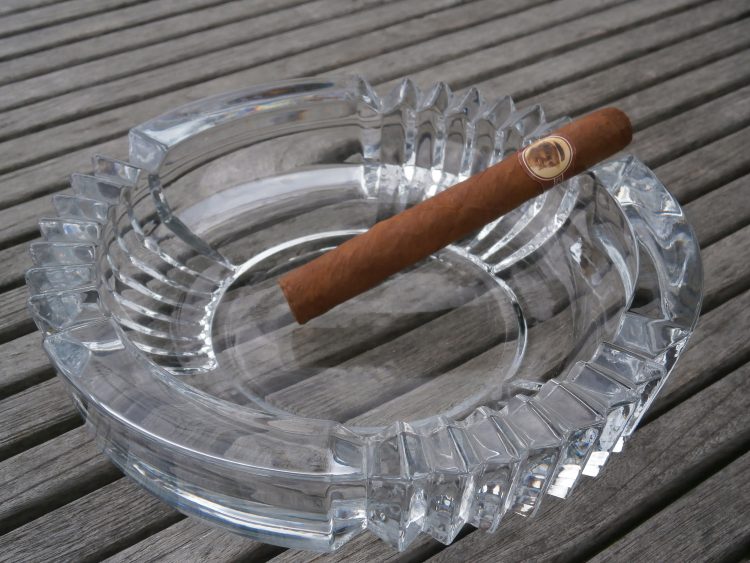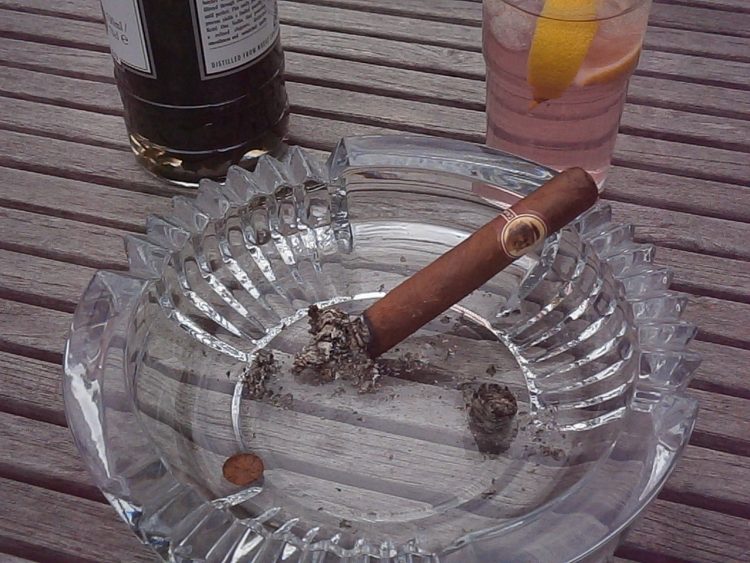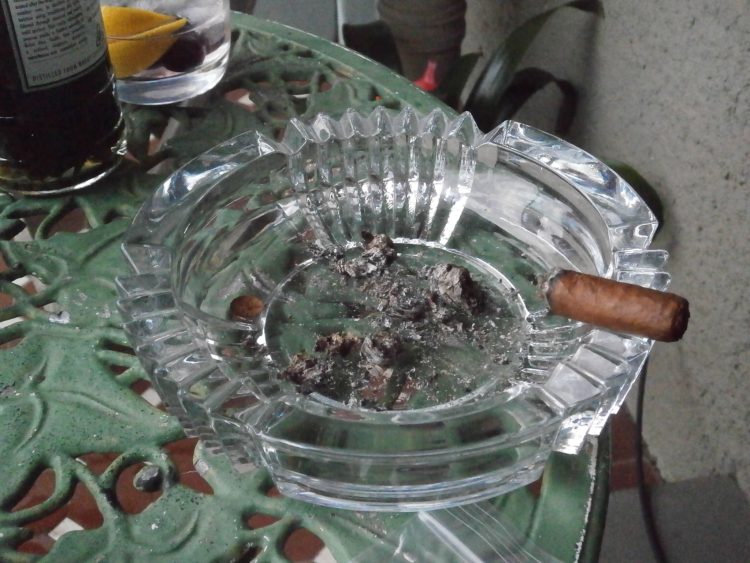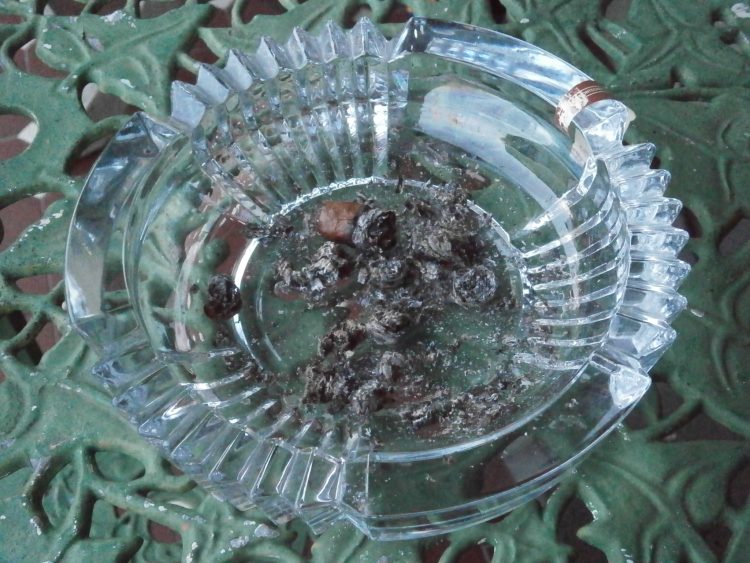In the last edition of A Harem of Dusky Beauties I talked about the Salomones II from the Compay 95 humidor; in this edition I will cover the other cigar from that box, a humble Montecristo No. 4. Please read that article if you would like some greater history of the humidor (or indeed my thoughts on South African chicken restaurants and privacy in our Orwellian present) – I won’t repeat myself here… there simply isn’t time, as today I have for you a rambling essay about cigar construction and blending.
Generally speaking, a cigar is made up of four tobacco leaves rolled into a bunch. The higher the leaf grows on the plant the stronger its flavour and the heavier its nicotine will be, and the slower it will burn. At the farms the leaves are sorted into categories based on what part of the plant they come from, and then they are dried, fermented and aged. The length of their fermentation and ageing, and the methods used to achieve it, vary dependant on what category they fall into. Eventually the leaves find their way into the central warehouses and the blender’s hands.
On one level the blend used in a cigar is a basic formula – an Upmann No. 2 might contain one leaf from the middle of the plant, one from the bottom, and another from the top (with a trained eye and a willingness to destroy an $11 cigar it is relatively easy to establish what proportions of each of these make up a given cigar), but there is some art beyond this in the blender’s occupation; the blender must search out some quality, a terroir is involved; he must inhale deeply of a leaf and say “ah ha! This has the subtle scent of coffee and vanilla bean, it must have come from the north side of the Vuelta Abajo valley, and belongs in a Montecristo Especial!” (presumably he goes on to say “but what’s this grassy aroma? My friend Boxer the plough-horse must have left some fertiliser near this plant… it smells like he had a good breakfast, that scamp!”)
Consider the case of the Punch Punch and the Punch Black Prince; these are two cigars of exactly the same size, from the same marque, from the same factory, bearing the same band and retailing at approximately the same price. What then is the difference then between the Punch Punch and the Punch Black Prince? The blend! The terroir! A hint of cinnamon and Boxer’s heavy lunch! My point is that blends are ethereal, hard to nail down, and that they matter, at least to the connoisseur.
I was once at a fundraising auction for the victims of a Cuban hurricane where the centrepiece of the items offered for sale was a box of special cigars donated by the Cuban ambassador to China. The cigars were Montecristo No. 4s with special bands celebrating 50 years of Chinese/Cuban comradeship, and the box they came in bore a similar sticker where the Habanos S.A. seal would usually sit. Diplomatic cigars, they were billed as, although what that means is hard to say. In the case of the diplomatic Cohiba Lanceros I think the consensus is that they represent the crème de la crème of the production; all Cohiba Lanceros are made equal, but some are more equal than others, and the diplomatics come only from the desks of the level 10 rollers, and while they all have the same blend, only those examples that are made from particularly fine leaves, only those examples that truly exemplify the blend are good enough for the diplomatic box.
At El Laguito with the Lanceros I can see it, but the Monte 4? Is someone sorting through the tens of millions produced annually, across many different factories, and plucking out the very best to throw in a box and send to China? Do high level rollers even roll Monte 4s? I doubt it. The ambassador probably purchased these cigars at the LCDH that morning and got a few bands printed up in a Chinese copy shop.
All of which is my long winded way of making a wider point about the Compay Segundo Monte 4: it tastes like a Monte 4, and were it to taste like something else it would on some level be a failure.
That said, it is a particularly fine example of the breed. Perfectly constructed. Well aged. Nice band. Recommended.
(P.S. It would be remiss of me not to mention the drink with which I accompanied this cigar, a shiso infused vodka and tonic.
When I was a child my sister and I briefly tried to raise silkworms (to what end I don’t recall – there certainly weren’t enough for pyjamas). We fed them on what our mother told us were mulberry leaves (their natural diet), and they lasted a week or so before dying premature and mysterious deaths (my mother attributed their demise to the unnatural heating in our home). I was a curious child, and must have sampled a mulberry leaf or two, because twenty years later when presented with an odd leaf as a garnish on a meat platter in Japan I instantly recalled the flavour: “that’s a mulberry leaf,” I declared with authority. Nobody disputed it.
That was five years ago, and today my friend Stevespool (a well-known Japanophile) has begun to cultivate shiso (known in the west as the ‘beefsteak plant’) to infuse into vodka. He offered me a raw leaf to sample, and after trying it I looked at him in confusion. “No Steve,” I said. “That’s a mulberry.”
That night in the shower I put the pieces together, and the ghosts of my silkworms, wandering for more than two decades, were finally put to rest. My mother had misidentified the plant.
Anyway, shiso infused vodka is pretty good. Sort of sweet, with a strong herbal aftertaste. It turns pink when you add the acid of the lemon to it!)
Montecristo No. 4 Compay 95 Aniversario Humidor on the Cuban Cigar Website



